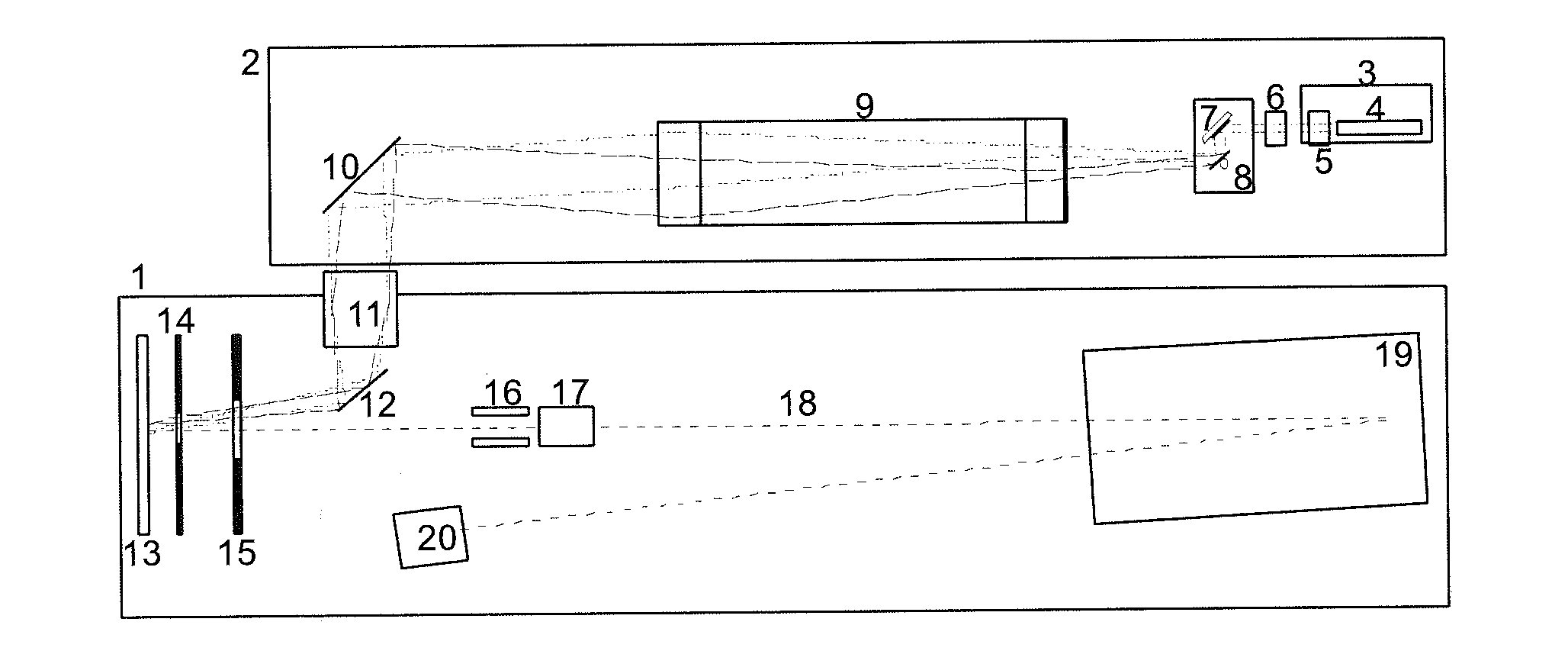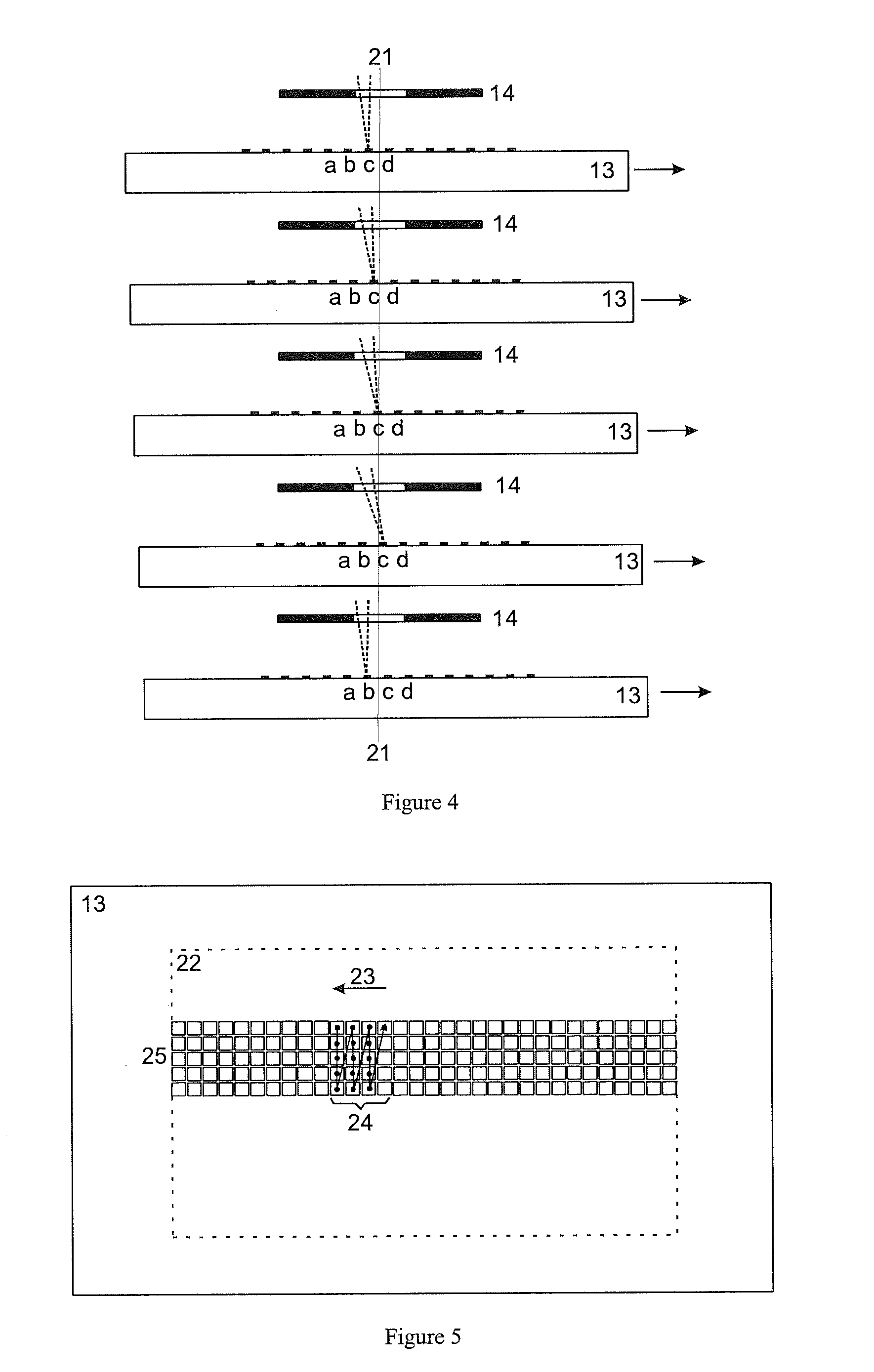Laser spot control in maldi mass spectrometers
a mass spectrometer and laser spot technology, applied in mass spectrometers, separation processes, instruments, etc., can solve the problems of high noise, small laser spot size, and very fine laser spots of only a few micrometers in diameter, and achieve optimal utilization of all analyte molecules, rapid position control, and high degree of utilization of analyte molecules
- Summary
- Abstract
- Description
- Claims
- Application Information
AI Technical Summary
Benefits of technology
Problems solved by technology
Method used
Image
Examples
Embodiment Construction
[0024]As has already been explained above, an objective of the invention is to avoid intermittent movements or fast to-and-fro movements of the mechanically inert sample support plate, including its holder, as far as possible, and to replace it with a low-inertia movement device for the laser light beam. The movement device should be capable of moving the laser spot to a different site in a time of only 100 microseconds, i.e. between two laser shots (of a laser system with a repetition rate of 10 kHz). A laser system with a repetition rate of 2 kHz requires a time of half a millisecond. In princi-ple, different types of deflection system can be used for the fast positional control of the laser spot or laser spot pattern, such as piezo-electrically moved mirrors or crystals with electrically changeable refraction. However, electrically moved galvo mirrors, as have been developed for laser scanners or laser labeling equipment, are technically most mature and particularly low-cost. At ...
PUM
 Login to View More
Login to View More Abstract
Description
Claims
Application Information
 Login to View More
Login to View More - R&D
- Intellectual Property
- Life Sciences
- Materials
- Tech Scout
- Unparalleled Data Quality
- Higher Quality Content
- 60% Fewer Hallucinations
Browse by: Latest US Patents, China's latest patents, Technical Efficacy Thesaurus, Application Domain, Technology Topic, Popular Technical Reports.
© 2025 PatSnap. All rights reserved.Legal|Privacy policy|Modern Slavery Act Transparency Statement|Sitemap|About US| Contact US: help@patsnap.com



